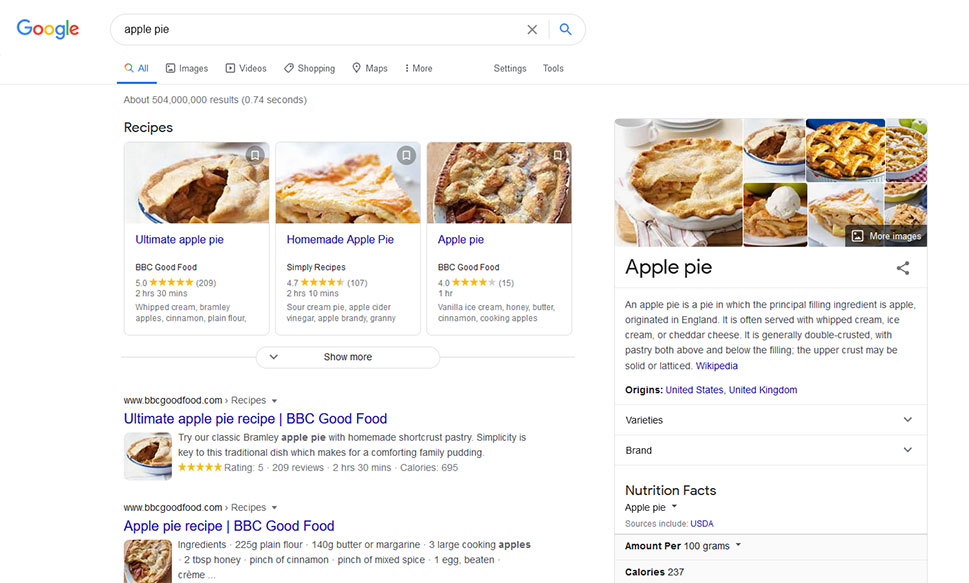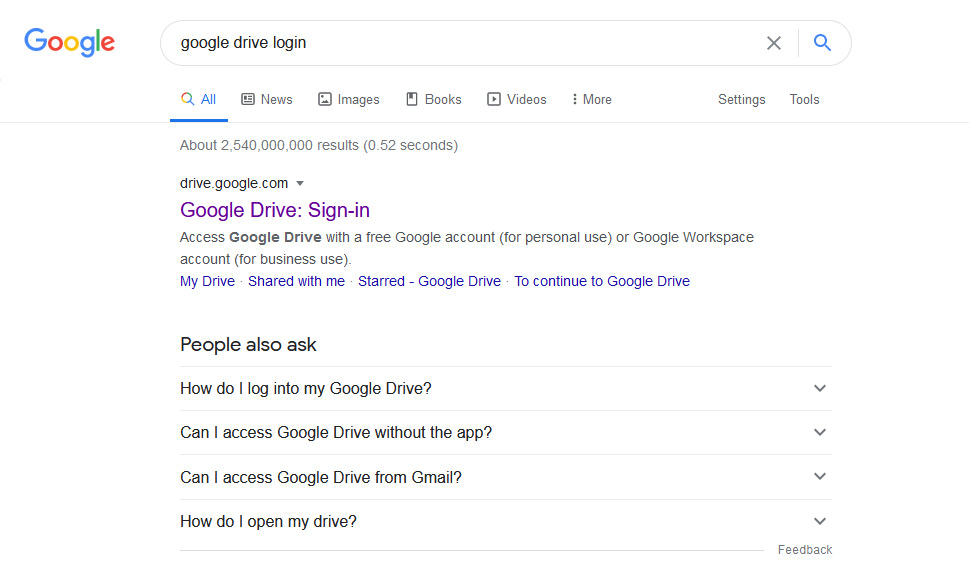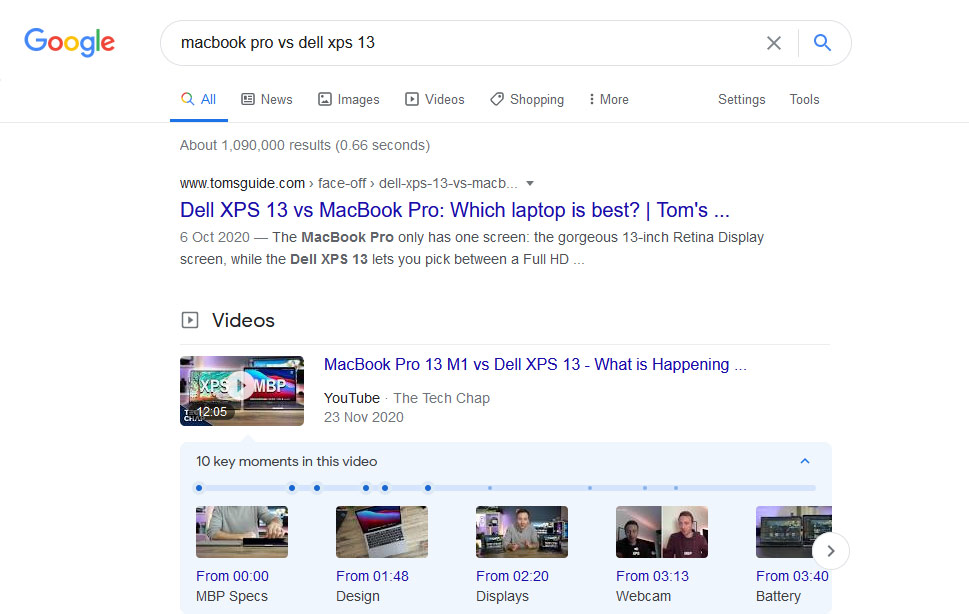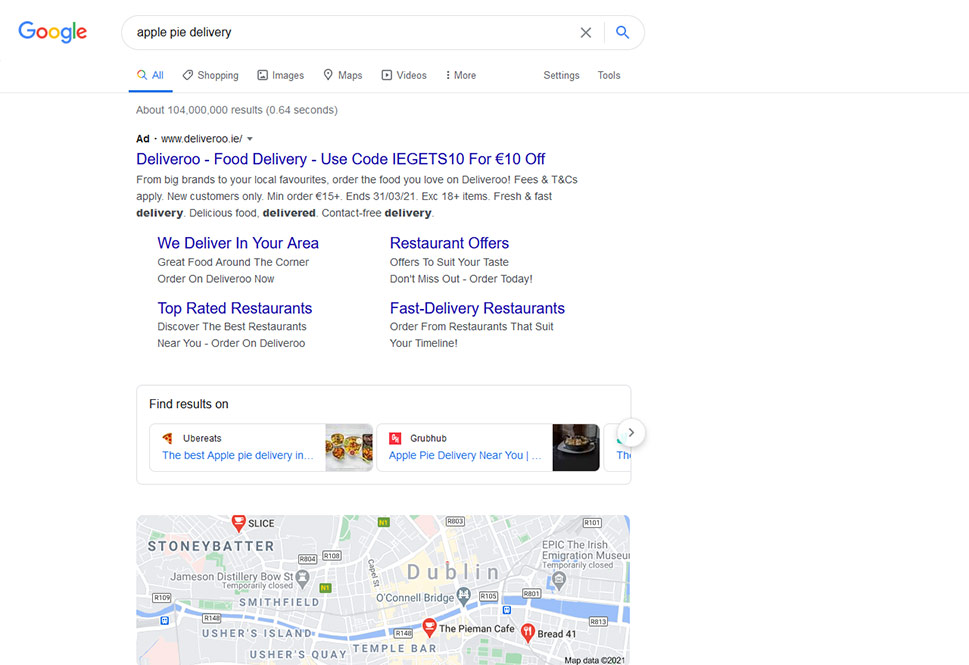A Beginner’s Guide to Search Intent

The way we look for things online has changed an incredible lot with time. The core mechanics we as the searchers perform stayed more or less the same – the query is still there, as is the search engine. The bulk of the change came from what the search engine did after receiving the query and it was most obvious in the quality of results we started seeing. At least some of it has to do with the search engine’s improved understanding of search intent.
But it wasn’t only the search engines that had to cater to specific search intents. Anyone who even dabbles in search engine optimization needs to factor in intent when choosing keywords, phrases, and even types of content they produce. For someone who’s new to all of this, it can get very confusing really fast. So let’s ease into it.
In this article, you’ll read:

When a person performs a query – searches for something online using a search engine – they have a reason for doing it. They want to achieve something – find out what’s the weather going to be like tomorrow, keep tabs on a business competitor’s blog, buy a present for a loved one, or find out which flowers are the right gift for which occasion.
Search intent is what they were trying to achieve with their queries. Because search intent is synonymous with user intent, you can think about it as the motivation the user had when they were making a query.
When you add search engines and how they work into the equation, you’ll see that their job is to determine the user intent – the motivation, reason for the query – with nothing but keywords and modifiers to go on. They will, then, display results – which are increasingly more varied than just a list of links – that present the search engine’s best approximation of what satisfies the user intent.
This makes the results relevant to searchers’ intent, which keeps the searcher from going to competing search engines. If you ever wondered what makes Google such a good search engine, its ability to determine search intent and satisfy it is a top contributor.
While keywords and keyword modifiers – words that help specify the search intent – might come in an endless stream of combinations, there aren’t endless types of search intents. You can categorize most searches by assigning them into one of only four different categories. This is a great tool to help you understand how search engines cater to different user intents, and what you can do to get your website among the ones chosen to fulfill that intent.
Informational Search Intent

Whenever someone is using a search engine to find some kind of information they want, their search intent can be classified as informational. Keep in mind that “informational” is a broad category, as the content that might be served up to match it for the keywords “apple pie,” for example, can include images of apple pies, videos of people making the apple pie, web pages with recipes, images of apple pie ingredients, articles about the history of the apple pie and its relevance in the culture today.
The type of informational content you get will depend on the modifiers you use. You can spice the search up using, for example:
-
apple pie pastry
-
apple pie calories
-
apple pie origins
-
apple pie filling
Usually, however, if you type only “apple pie” in the search bar, search engines will serve up endless recipes because they know that’s what people are looking for. Search engines are becoming better at that by the day.
Navigational Search Intent

When a person is making a query with the sole purpose of viewing a certain website, web page, or service, their intent is what we call navigational. They are making the query so they can visit a certain site. Searching for “Google Drive,” “YouTube,” or “Twitch” will usually yield the website that’s been searched for as one of the top results, likely the topmost one.
Here are some navigational modifiers you might come across:
-
Contact
-
Customer service or support
-
Login or sign in
-
About Us
When ranking for navigational search terms, it’s best to stick to the terms that relate to your website. There’s no reason to try to rank for “Wikipedia login,” or something like that.
Commercial Investigation Search Intent

Also called preferential search intent, this is what people do when they’re researching products online. One of the interesting ways people have been using the internet to make purchase decisions – even when making in-store purchases – is to go online and look for comparisons, reviews, and opinions on things before deciding whether to purchase them. A commercial investigation search is a part of that process.
The searches that fall into this category may look something like this:
-
The best laptop under $700
-
iPhone 12 review
-
Frozen apple pie comparison
-
Nike Pegasus vs Adidas Ultra Boost
As you can see, the types of modifiers you’ll find in this intent type include lots of “best,” “vs,” “review,” but you’ll also find the occasional locational modifiers – names of parts of cities, or the ubiquitous “near me.” It’s also possible that this type of search will contain two or more names of products or services.
Transactional Search Intent

When people know what they want to get and they just want to get on with it, without searching for any additional information or reviews, they’ll search to buy a specific thing, sometimes from a specific place. In this case, their search intent is transactional – their goal is to make a purchase.
When people want to make a purchase, their searches might look like this:
-
buy baby clothes online
-
McDonald’s apple pie coupon
-
iPhone accessories Amazon
-
laptop sale near me
This search will usually contain the name of the product or service they want to buy. Sometimes, if the product or service is a generic term, they might use a branded keyword as a modifier, specifying either the brand of the product or a specific shop where they want to make a purchase.
Now that you understand what search intent is, and why search engines need to be good at determining search intent and answering it, let’s see what all of it means to you. If you have a website and you want the people to be happy they visited it, it probably won’t suffice to only match the search term – you’ll need to match the intent type, as well.
Understanding the Intent

First of all, you’ll need to have a way of understanding what’s the intent behind a search phrase. Sometimes, your knowledge of language and instincts will be all you need to figure out what’s the intent behind the phrase. Other times, you’ll need to rely on telltale signs such as modifiers to help you out. Here are the modifiers that go well with specific search types:
-
Commercial Investigation – compare, review, best, vs.
-
Navigational – name related to a specific location, be it a brand, a product, or a service
-
Informational – the five W’s (who, what, when, where, why), guide, tips, example, tutorial
-
Transactional – buy, purchase, order, price
Page Optimization

Next, you can use the combination of modifiers and the keywords you want to rank on to optimize certain pages of your website. The same website can cater to visitors with widely different search intents who got there using the same keyword, and in that case, it’s paramount that you optimize for intent.
For example, if you’re selling baked goods – pies, let’s say – you might create category pages for different kinds of pies, and then product pages for each pie specifically. You could then ensure that these pages contain relevant keywords with the transactional modifiers, as well as the type of content people would expect to see on category and product pages – images and descriptions.
If the store has a blog, you can optimize it for informational intent – but also commercial investigation if that’s the type of content you want to create. Again, this means creating the appropriate content – how-to articles, infographics, even quizzes – and using the keywords with appropriate modifiers.
You’ll have a tough time optimizing for navigational intent unless you’re doing it for your brand and website. As for transactional search queries, the trick might be in boosting your organic strategies with search engine advertising. The fact that this type of intent usually carries the biggest ROI might warrant it.
SERPs Analysis

You might have noticed that search engines don’t display results for all the queries in the same way. Depending on the intent, you’ll see that the search engine displays different contents in different orders. This is important to notice because it will help you format the contents on your pages so that they rank better.
Check out the top performs on different SERPs. See what they have in common and try to find formatting rules that can help you make your content more likely to appear at the top. For example, check out the formatting of content that appears in the featured snippet, and see if you can apply any changes to your content that would make it more likely to appear in a snippet.
Content Creation

Using keywords and search intent modifiers with a keyword research tool is a sure way to get to some content ideas. If you’re having trouble coming up with topics for your blog, this is a great way to get you out of the bind. There’s no better way to come up with content ideas than to look up what people are looking up.
Looking at the broader picture that includes content types other than just articles or posts, you should always make sure that the content matches the intent. It has to match the type so that you don’t send people with transactional intent to informational content, for example.
Content also needs to follow the format that works best for that type of content – a how-to for informational content, for example, and product reviews for commercial investigation.
Ideally, it should also have something in the title to make it a bit spicier, an adjective or two that communicate why people should look at that exact piece of content. It doesn’t have to be much – saying that something is easy, simple, or pretty could do the trick. You just need to catch the eye and give an extra reason to give the content a look.
Let’s Wrap It Up!
For the most part, search engines are in the business of enabling people to find the things they need. This might sound simple but serving relevant results for a simple query is everything but an easy job. To be good at it, search engines need to be good at understanding why people are looking for something.
But it’s not just the search engines who need to understand search intent – everyone who wants to be found via a search engine query needs to understand intent, too. This beginner’s guide showed you the basics of search intent, the what and the why, and at least a small part of the how. Now it’s up to you to do your best to apply it on your website.



